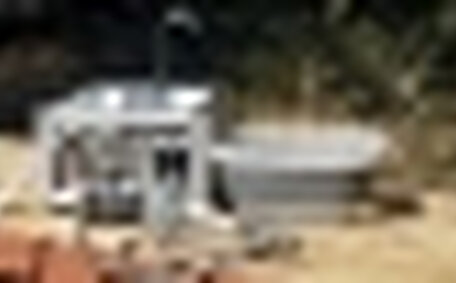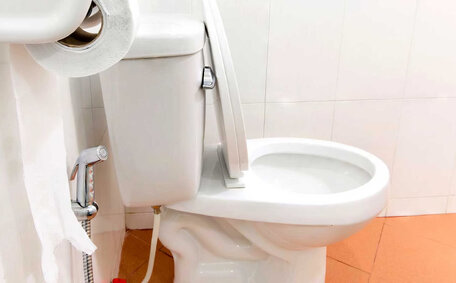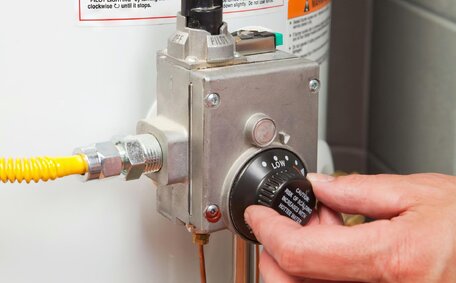Introduction to Pipe Relining
Pipe relining is a no dig, trenchless method of pipe repair for damaged pipes without having to excavate the affected infrastructure. The relining vs traditional replacement debate often settles on the non-invasive method that involves inserting an epoxy resin liner into the sewer pipe to seal cracks. Skillfully executed by experts, pipe relining can last up to 50 years, questioning how long does the life of old pipes actually extend remarkably.
Some key benefits of relining your sewer drain include:
- Minimal excavation - Only small access points are needed, saving your garden from the hassle of extensive excavation to insert relining materials.
- Long term solution - Relining how does it work? Epoxy liners bond tenaciously to the inside of pipes for superior durability.
- Cost-effective - Tends to be significantly more affordable than other common pipe replacement procedures.
- Quick process - Cured in place pipe lining takes just a few hours.
- Reduced disruption - Daily routines, from running water to business operations, can continue without hindrance.
For any type of dig pipe materials and diameters, including vital sewer lines to your toilet, relining emerges as a suitable solution. It’s adept at mending problems in your sewer line networks, stormwater drains, water service conduits and beyond. Over time, tree roots, ground movement, and general wear can lead to damages on your property that require repair through pipe relining.
Revealing how does relining work, it essentially forges a 'pipe within a pipe’ with robust, protective epoxy barriers. When assessing relining quality, check liners have cured evenly without air pockets or gaps. The most obvious indicators of a skilled relining job are the use of first-rate materials and professional, meticulous installation.
Signs of a Poor Quality Pipe Relining Job
There are a few key signs your pipe relining job may have been poorly executed or used substandard materials:
- Slow drains - If your sink shower drains remain sluggish after relining, it likely implies the epoxy barrier didn’t fully adhere or effectively seal the pipe.
- Recurring blockages - Frequent clogs and drain backups after a relining point to gaps or weaknesses in the liner allowing waste buildup.
- Lingering leaks - Persistent leaks and water damage following a repair signal the liner failed to adequately seal cracks and faults.
- Bad smells - Sewer gas odours after relining suggest the liner is letting gases permeate through gaps in the barrier.
The implications of a failed lining job on a damaged pipe include continued deterioration, costly water bills from leaks, flooding risks and potential foundation damage if left unaddressed.
To remedy or prevent issues, a full inspection and possible replacement of the faulty lining may be required. This involves removing the old liner through high-pressure water jetting before re-lining the pipes to fix blocked drains effectively.
Here in Sydney, we provide professional pipe relining services, with skilled technicians using superior quality epoxy resins, to prevent complications from the start. Look for guarantees from reputable companies to ensure you get the durable, long-lasting pipe renovation needed.
Slow or Clogged Drains
After a quality pipe relining job, your drains should have a smooth, unimpeded flow. If you’re concerned about your consistent clogging or backed up water, it likely signals gaps or weaknesses in the installed liner.
Slow drains water ineffectively, which along with recurring blockages signals potential pipe issues behind liner faults. Both point to issues with the sealing integrity or thickness of the relining barrier.
When it comes to potential risks, unchecked drainage issues may wreak havoc further down the line with your plumbing system damage, flooding, sewer backups into the home, and materially costly repairs. When it comes to pipe health, catching lining failures early is key. If you have recently had relining work done but still endure slow drains or clogs, contact the company to inspect and replace the faulty liner.
Any reliable contractor will offer warranties against defects, particularly in the main drain repairs. Pipe relining is intended to be a long-term solution, so you shouldn’t accept anything less from substandard work or products.
Persistent Bad Odors
If bad odours persist from your drains after a pipe relining job, it’s a red flag that gaps may exist in the installed liner. Sewer gases can leak through these gaps, releasing unpleasant sulphurous smells into your home.
Lingering foul odours indicate the epoxy barrier has failed to adequately adhere and seal off cracks and leaks within the pipes. This allows built-up grease, waste debris and sewer gases to slowly seep through.
Left unaddressed, the smells could worsen over time. Enduring bad smells coming from your drains likewise pose a threat to your plumbing due to corrosion and degradation from inside out caused by relentless exposure to sewer gases.
To remedy sewer smells after relining, contact the original company to inspect the pipes. High-pressure water jetting combined with CCTV drain camera inspection can identify liner faults allowing gases to enter.
If large gaps exist, it may be necessary to re-line the pipe completely to fix your plumbing issues. However minor faults might only need sealing with an additional protective layer of epoxy resin to block off smells.
Quality materials and adherence to a precise relining process are key for effective, long-lasting drain relining. Be wary of low quotes or dodgy handymen – the adage ‘you get what you pay for’ certainly applies to preventing issues down the line.
Leaking Pipes
If you notice water leaks, damp patches or mould growth after a pipe relining job, it likely indicates liner failures. Proper relining seals cracks and gaps completely to prevent leaks.
Pinpointing the exact location of liner leaks can be tricky. You might ponder, 'What actions do I consider?' upon observing water accumulation near external pipe access points left unsealed. Or leaks may only manifest as water damage inside your house’s walls or ceilings.
Unresolved lining leaks in your hot water system accelerate deterioration leading to expensive repairs. We recommend getting any persistent water leaks, leaks near electricals or leaks inside wall cavities inspected urgently by the company that performed the relining.
They should check for liner faults using drain CCTV cameras. From here, they can advise if sectional repairs, seam sealing or full pipe replacement is required to permanently fix the leaks.
Factors That Can Cause Pipe Relining Failure
There are several key factors that can jeopardise the integrity and durability of a pipe relining job:
- Pre-existing damage - Severely corroded, fractured or collapsed pipes may be beyond repair. The liner struggles to bond and seal when the affected pipes can be severely degraded.
- Improper materials - Low-grade, non-conforming or Incorrectly mixed epoxy resins present risks of poor curing, flaking or detachment no matter the application.
- Inadequate surface prep - Not thoroughly cleansing waste residue or corrosion allows poor liner bonding.
- Unskilled workmanship - Improper installation techniques like inadequate curing times or temperatures lead to failures.
- Site conditions - Nearby tree roots, shifting soil and extreme weather events can damage freshly lined pipes.
Faulty application or materials result in a relining with no symptoms of strength or long-term sealing effectiveness. Any factors that compromise the epoxy barrier will require urgent pipe reassessment and replacement to avoid ongoing issues.
Choosing experienced technicians adhering to industry standards helps minimise risks. Many also offer long warranties against defects for peace of mind.
Improper Materials or Application
Using subpar materials during pipe relining, you can expect to jeopardise the integrity of the repair. Substandard epoxy resins risk poor bonding, flaking off or deteriorating prematurely.
Likewise, improper techniques like inadequate surface preparation, incorrect curing times or temperatures lead to early liner failures. Not thoroughly cleaning corrosion or fully sealing access points causes leaks, blockages and odours down the line.
Ensuring experienced technicians follow stringent industry application standards is key. They will use commercial-grade resins fully compliant with water authorities, measure mixing precise ratios and have suitable equipment to evenly distribute liners.
Enlisting qualified plumbers for pipe relining can help get your plumbing back on track, avoiding problems from shoddy or DIY workmanship. Many companies offer product guarantees and warranties against defects for peace of mind on your investment.
Pre-existing Pipe Damage
Pre-existing pipe damage like cracks, fractures and corrosion can jeopardise the success of a relining job. Severely degraded pipes may be too far gone for liners to adequately bond and seal.
Before relining, a detailed pipe inspection using CCTV drain cameras checks for damage level.section collapses, large cracks or 70% corrosion may deem pipes unsuitable for relining.
In these cases, full pipe replacement is recommended over attempting repairs. Even if liners bond initially, they tend to fail quicker in heavily damaged pipes. Installing a new pipe system ensures structural stability and longevity exceeding 50 years.
For moderately damaged pipes that need pipe relining, meticulous surface preparation helps liners adhere properly. High-pressure water jetting then cleanses the old pipe, removing scale, residue, and corrosion before applying the liner. Quality resin materials that flexibly mould to imperfections also assist bonding.
So while the existing state of pipes plays a big role, rigorous pre-relining checks and site prep provides the best chance for success. This avoids problems down the track if damages exceed capabilities for durable lining repairs.
Calling a Professional for Inspection
If you notice ongoing drainage issues, leaks or foul odours after a pipe relining job, it’s wise to contact your plumber to inspect the work.
A thorough evaluation would typically involve:
- A CCTV drain camera inspection - Checks liner integrity and identifies any faults allowing blockages, leaks or smells.
- Drain cleaning via hydro jetting - High-powered water blasting cleans out debris to improve water flow and drainage.
- Leak detection tests - Sensitive acoustic tests pinpoint any hidden water leaks behind walls or underground.
- Pressure testing - Confirms optimal water level flow and drainage rates for peak plumbing performance.
From the inspection results, an experienced plumber can advise if sectional liner repairs, seam sealing or full pipe replacement is required to fix underlying issues.
Addressing issues swiftly avoids complications coming up and saves considerable costs compared to leaving faults to worsen over time. If you have concerns after a relining job, don’t hesitate to book a professional drainage inspection.
Options to Fix a Faulty Relining Job
If inspection confirms your pipe relining job was faulty, a few options exist to remedy issues:
- Full pipe re-lining – Removing the old liner then installing a new seamless epoxy barrier for 50+ years durability.
- Spot repairs – Sealing liner gaps with an additional layer of resin to prevent leaks/blockages.
- Pipe replacement – Installing entirely new pipes may be required if structural damage is beyond relining capabilities.
The best solution will depend on the inspection findings and extent of faults. Severe widespread liner detachment will likely need full replacement. Whereas small air pockets could be simple patch-sealed.
Dependable firms will meticulously evaluate and support their workmanship, so for enquiries or concerns, give us a call without delay. Many offer warranties on parts/labour should defects arise from poor materials or application.
If resolution is not adequately reached with the original tradesman, consider getting a second opinion from a trusted, licenced plumber. Pipe relining is a specialist job – expertise and quality matter to avoidrepeat issues.
Preventing Future Relining Issues
Taking preventative measures is key to avoiding failed relining jobs down the track. We recommend scheduling recurring drain inspections every 2 years after pipe relining.
Technicians use CCTV cameras to remove any doubts about liner conditions by thoroughly checking for faults or risks that need attention. If identified early, minor issues can be swiftly patched before escalating.
Practising diligent drain maintenance, like removing food particles, also prevents problems from arising. Avoid pouring fats or harsh chemicals down drains, trim intrusive tree roots if detected, and install protective drain mesh screens to keep debris buildup minimal.
Leave drain access points clear and visible for future check-ups. Well-maintained drains optimise liner lifespan of 50+ years.
Proactively monitoring your pipes brings peace of mind that relining remains intact. We take pride supporting customers long beyond initial repairs to avoid repeat issues.
Maintaining Pipes After Relining
After investing in a professional pipe relining job, ongoing maintenance helps optimise its durability and performance.
We recommend scheduling recurring drain inspections every 2 years using CCTV cameras. Technicians check liner conditions, assessing for damage risks needing attention. Minor faults detected early can be swiftly repaired before escalating.
You can also implement preventative measures at home. You can also implement preventative measures at home. You can also implement preventative measures at home. And install mesh screens in your drain to prevent debris buildup.
Keep drain access points clear for check-ups. Well-maintained drains extend liner lifespan to 50+ years. Should you spot any new drainage concerns, leaks or blockages, don’t hesitate to call us quickly for a thorough assessment and repairs.
At Colyton Plumbing, we pride ourselves on long-term service. Our expertise ensures your relining stays intact for decades to come. For top-notch plumbing maintenance checks or repairs, call us on 1300 349 338.






